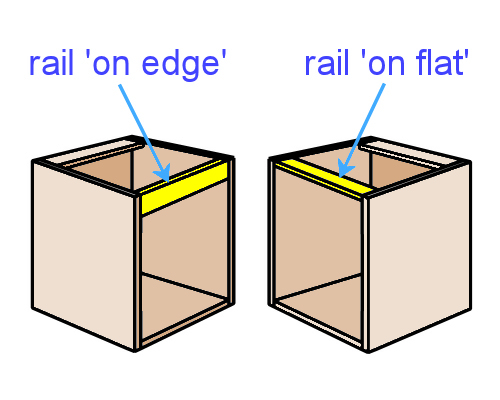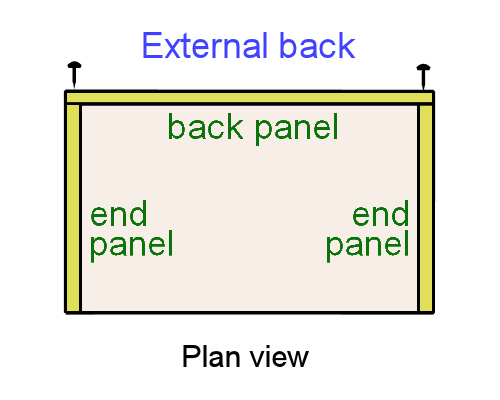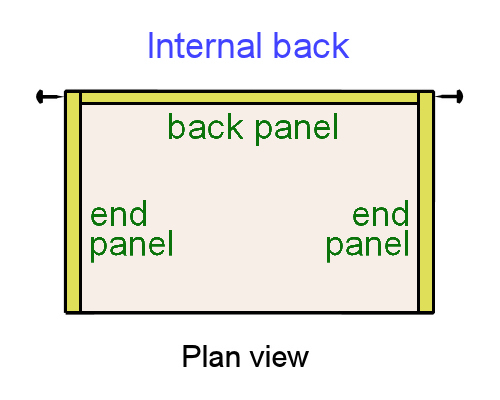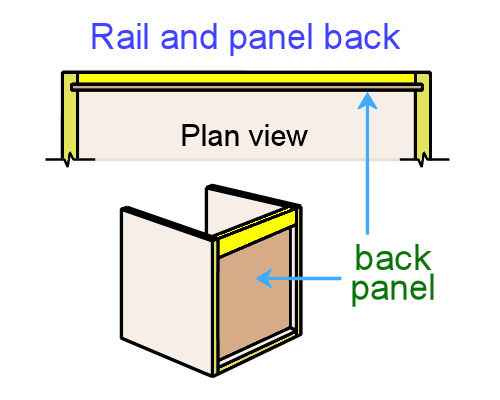Carcases
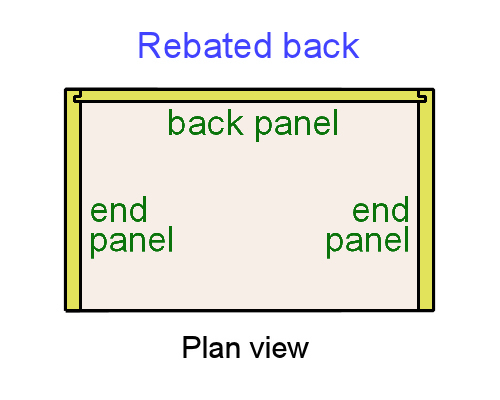 Audio for slide 5 (mp3 |6|KB)
Audio for slide 5 (mp3 |6|KB)
There are other ways of fixing a back panel, although these aren't used much for kitchen and bathroom cabinets.
One method is to cut a groove in the end panels and insert a rebated back.
This is a traditional cabinetmaking technique, and allows the joint to be glued without the need for nails or screws.

One method is to cut a groove in the end panels and insert a rebated back.
This is a traditional cabinetmaking technique, and allows the joint to be glued without the need for nails or screws.

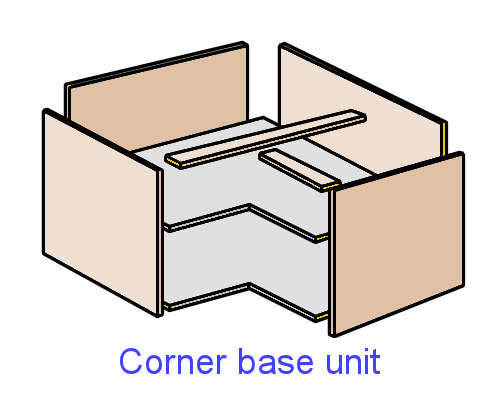 Audio for slide 7 (mp3 |6|KB)
Audio for slide 7 (mp3 |6|KB)
Whatever the shape or size of the cabinet, most carcases have the same basic structure.
This corner base unit, for example, faces in two different directions, but it still has a base, two ends, and in this case, two backs and two front rails.
In the next lesson, we'll look at the process of assembling the panels and fixing them in position with screws, nails or staples.

This corner base unit, for example, faces in two different directions, but it still has a base, two ends, and in this case, two backs and two front rails.
In the next lesson, we'll look at the process of assembling the panels and fixing them in position with screws, nails or staples.


Learning activity
Audio 8 (mp3 |6|KB)The most common method for fixing the back panel in kitchen and bathroom cabinets is to use an external back. Is this the method you use?
Do you ever use other techniques for particular jobs?
If so, what are they, and what sorts of cabinets are they used on?
Share your answer with your trainer and other learners in your group.

Go to Assembly
Industry Network Training and Assessment Resourses
© 2016 Workspace Training



